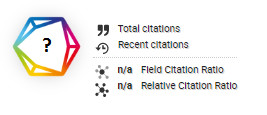Creativity in Utilization Nipa Waste for Environmental Sustainability and Family Economic Improvement
DOI:
https://doi.org/10.46984/sebatik.v28i2.2469Keywords:
Utilization, Nipa Waste, Environment, Local EconomyAbstract
Waste management can be achieved through reduction strategies or direct handling of waste. In fostering creativity, utilizing nipa waste represents an innovative effort to support environmental sustainability and enhance the local economy. Environmental well-being encompasses both health and cleanliness, as a clean environment forms the foundation of a healthy life. However, public awareness of maintaining environmental cleanliness remains low, and habits of neglect continue to prevail in daily life. Beyond achieving improved cleanliness, creative initiatives such as nipa waste utilization also inspire innovation and fresh ideas. This study explores the potential of nipa waste as an alternative raw material to reduce negative environmental impacts while providing economic benefits for the local community in Samarinda Seberang. The research employs qualitative methods, including literature reviews, field surveys, and data analysis of nipa waste utilization processes. The results indicate that utilizing nipa waste can significantly contribute to environmental sustainability by recycling organic waste into value-added products. Furthermore, it creates economic opportunities for the local community through new businesses and increased income. The discussion highlights the implications of these findings for environmental sustainability and emphasizes the potential for collaboration among the government, community, and private sector in promoting nipa waste utilization. The study concludes by underscoring the importance of nipa waste utilization as a holistic approach to achieving sustainable environmental management and generating positive economic impacts for the local community in Samarinda Seberang.
References
Arfadiani, D., & Larasati, D. (2013). Pemanfaatan limbah tempurung nipah muda melalui pengembangan desain produk alat makan. Product Design, 2(1), 162197.
Bellver, D. F., Prados-Peña, M. B., García-López, A. M., & Molina-Moreno, V. (2023). Crafts as a key factor in local development: Bibliometric analysis. In Heliyon (Vol. 9, Issue 1). Elsevier Ltd. https://doi.org/10.1016/j.heliyon.2023.e13039.
Iswari, 2021. Pengolahan Tanaman Nipah (Nypa Fruticans Wurmb.) Untuk Meningkatkan Ekonomi Masyarakat Pesisir. Buku: 74-84. Menggapai Pertanian Maju, Mandiri, Modern: Dari perspektif ASN Pertanian, Ed. M. Budiman, S.Lesmana, R. Hendayana, Yulianto, P. Rahmat. ISBN: 978- 602-322-069-4. Penerbit Pusat Perpustakaan dan Penyebaran Teknologi Pertanian Jalan Ir. H. Juanda No. 20 Bogor 16122.
jendala dunia. 2023. “4 Daya Tarik Kampung Ketupat, Lokasi, Harga Tiket, Dan Jam Bukanya.” kumparan.com. https://kumparan.com/jendela-dunia/4-daya-tarik-kampung-ketupat-lokasi-harga-tiket-dan-jam-bukanya-20keSbKZsHf.
Mutiarni, R., Zuhroh, S., & Utomo, L. P. (2018). Pendampingan Pencatatan Transaksi Dan Penyusunan Laporan KeuanganBadan Usaha Milik Desa (Bumdes) Putra Subagyo Desa Miagan-Jombang. Comvice: Journal of community service, 2(1), 21- 28
Nurliah, Nurliah, Salma Elika, and Uni W. Sagena. 2022. “Sosialisasi Pengelolaan Dan Pemanfaatan Sampah Organik Rumah Tangga Dalam Memproduksi Ekoenzim.” Jurnal Pengabdian Masyarakat Madani (JPMM) 2(1): 33–39.
Siregar, K. R., & Sagena, U. W. (2023). Implementasi Kerja Sama Lingkungan Hidup di ASEAN dalam Kerangka Konvensi Perubahan Iklim. Jurnal Pendidikan Tambusai, 7(3), 27987–27995
Wijaya, Adi et al. 2022. “Peningkatan Ketahanan UMKM Dan Kelompok PKK Di Kampung Ketupat Kota Samarinda Menghadapi Krisis Pandemi.” Jurnal Pustaka Mitra (Pusat Akses Kajian Mengabdi Terhadap Masyarakat) 2(2): 70–75.
Downloads
Published
How to Cite
Issue
Section
License
Copyright (c) 2024 Khoffifah, lisdawati, Kresnina; Uni W Sagena

This work is licensed under a Creative Commons Attribution 4.0 International License.
Authors retain all their rights to the published works, such as (but not limited to) the following rights; Copyright and other proprietary rights relating to the article, such as patent rights, The right to use the substance of the article in own future works, including lectures and books, The right to reproduce the article for own purposes, The right to self-archive the article








